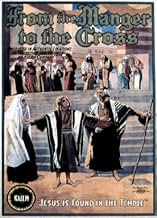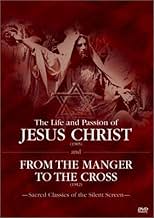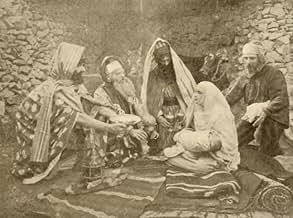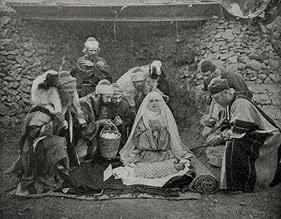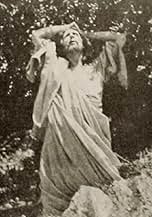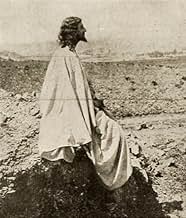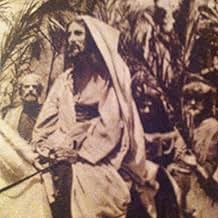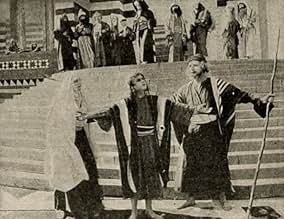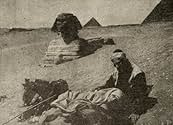AVALIAÇÃO DA IMDb
5,8/10
686
SUA AVALIAÇÃO
Um relato da vida de Jesus Cristo, baseado nos livros do novo Testamento. Depois do nascimento de Jesus pastores e sábios o visitam em Belém.Um relato da vida de Jesus Cristo, baseado nos livros do novo Testamento. Depois do nascimento de Jesus pastores e sábios o visitam em Belém.Um relato da vida de Jesus Cristo, baseado nos livros do novo Testamento. Depois do nascimento de Jesus pastores e sábios o visitam em Belém.
- Prêmios
- 1 vitória no total
R. Henderson Bland
- Jesus - the Man
- (as Robert Henderson-Bland)
Sidney Baber
- Thaddeus
- (não creditado)
G. Howard Barton
- Wise Man 3
- (não creditado)
F.T. Bostock
- Second Thief
- (não creditado)
Frederic Bryson
- St. John
- (não creditado)
J.J. Clark
- John
- (não creditado)
Ralph T. Duncan
- Simon
- (não creditado)
Lydia Gardebeau
- Salomé
- (não creditado)
Frank T. Gregory
- St. Andrew
- (não creditado)
Denton Harcourt
- St. Matthew
- (não creditado)
Avaliações em destaque
This movie is not the first feature picture. That distinction appears to go to an Australian film, NED KELLY AND HIS GANG from about 1906. Others, particularly the Italians, had made a few films of more than a couple of reels before FROM THE MANGER TO THE CROSS came out. Nonetheless, this movie is historically very important as the first American feature..... and much of it was shot on location in Egypt and what was then Palestine. It was an enormous undertaking in its time and deserves our respect.
But, does that mean it is worth seeing? Well, if you are fascinated by the history of the film, yes. If you are unfamiliar with silent film techniques, then no, almost certainly not.
This film is shot as a series of tableaux. In the films of D.W. Griffith and others of his line, the titles explain the picture. In tableaux, the pictures illuminate the text of the titles, like an illustrated edition of a novel. Given the average American's familiarity with the subject of this movie -- the life and death of Jesus Christ -- and the use of quotes from the New Testament as titles, this is precisely the effect of FROM THE MANGER TO THE CROSS: an exciting one, for people who never got to travel further than downstate. To a modern audience, however, it will seem static, as this style of moviemaking went out of style by about 1920.
Second, there are the anachronisms. Cities are shown in their modern guises and if Jesus never saw the walls of Nazareth reared by the Crusaders, so much the worse for the moviegoer. If the nose of the Sphinx was battered off some time between 700 and 1000 AD, someone viewing this picture would never know it, given that Jesus, Joseph and Mary are shown sitting in front of the Sphinx and a pyramid to illustrate the Egyptian exile.
So there are problems with this movie that make it something not to be recommended to the average, or even above-average moviegoer. However, if you love films for their own sake, give it a look.
But, does that mean it is worth seeing? Well, if you are fascinated by the history of the film, yes. If you are unfamiliar with silent film techniques, then no, almost certainly not.
This film is shot as a series of tableaux. In the films of D.W. Griffith and others of his line, the titles explain the picture. In tableaux, the pictures illuminate the text of the titles, like an illustrated edition of a novel. Given the average American's familiarity with the subject of this movie -- the life and death of Jesus Christ -- and the use of quotes from the New Testament as titles, this is precisely the effect of FROM THE MANGER TO THE CROSS: an exciting one, for people who never got to travel further than downstate. To a modern audience, however, it will seem static, as this style of moviemaking went out of style by about 1920.
Second, there are the anachronisms. Cities are shown in their modern guises and if Jesus never saw the walls of Nazareth reared by the Crusaders, so much the worse for the moviegoer. If the nose of the Sphinx was battered off some time between 700 and 1000 AD, someone viewing this picture would never know it, given that Jesus, Joseph and Mary are shown sitting in front of the Sphinx and a pyramid to illustrate the Egyptian exile.
So there are problems with this movie that make it something not to be recommended to the average, or even above-average moviegoer. However, if you love films for their own sake, give it a look.
Sidney Olcott's curious life of Christ was staple fare for 50s schoolkids under the guise of the terrible voiceover version distributed by Rev. Brian Hessian - this was the version I first saw and although the quality of the film, all its anachorisms aside, shone through, I didn't think the marriage of modernish narration to silent splendour worked at all.
I later saw a tinted copy on video with a lovely musical accompaniment and was struck by the touching portrayal of Robert Henderson-Bland as Jesus. Some of the camera tricks are justly famous, the boy and the cross probably more so than any other, but this very early feature film is one of the best I have seen so far.
I later saw a tinted copy on video with a lovely musical accompaniment and was struck by the touching portrayal of Robert Henderson-Bland as Jesus. Some of the camera tricks are justly famous, the boy and the cross probably more so than any other, but this very early feature film is one of the best I have seen so far.
Director Sidney Olcott did not have a stunning career. If anything it was mediocre at best. But on this effort he played above his head, perhaps not even realizing it. "From the Manger to the Cross" is a beautiful film, rich in substance and well acted as well.
The story is well known and Olcott details all of Christ's shining biblical moments in a series of scenes that overcomes many setbacks of the early 1910's. Of particular note is the way he uses a large cast to still convey the emotions present during a particular scene. Christ's admittance to his disciples that his days on earth are numbered come to mind here. On location shooting, no easy task for its day considering the entire thing was done in Egypt and Palestine, would definitely be another.
Even with these tools, the film may have fallen flat were it not for Robert Henderson-Bland's portrayal of Jesus. When the most crucial aspects of the Messiah's personality are the things he said, how can a silent film succeed in showing his substance? Answer: facial expressions and body language. And Bland, without the as yet invented close-up, shines in showing Christ as a man of wisdom, gentleness, and courage. Bland's Jesus is still among the finest to ever grace a screen and we're closing in on a century of film following it. Robert Vignola's Judas also deserves a mention as well.
It also bares mentioning that Timothy Howard's organ score, added in 1994 upon the film's home release, is a beautiful addition. In 1998 "From the Manger to the Cross" was given the highest honor a film can receive: it was added to the National Film Registry, an accolade it well deserves. For now and all time it should be recognized not only as America's first feature film but as a testament to what can be accomplished in the name of art and love when all of the pieces fall into the right place at the right time. Olcott and Henderson-Bland forever have a much deserved home in film history's hall of fame.
The nutshell: required viewing for directing, acting, technological achievement, and artistic beauty...8/10.
The story is well known and Olcott details all of Christ's shining biblical moments in a series of scenes that overcomes many setbacks of the early 1910's. Of particular note is the way he uses a large cast to still convey the emotions present during a particular scene. Christ's admittance to his disciples that his days on earth are numbered come to mind here. On location shooting, no easy task for its day considering the entire thing was done in Egypt and Palestine, would definitely be another.
Even with these tools, the film may have fallen flat were it not for Robert Henderson-Bland's portrayal of Jesus. When the most crucial aspects of the Messiah's personality are the things he said, how can a silent film succeed in showing his substance? Answer: facial expressions and body language. And Bland, without the as yet invented close-up, shines in showing Christ as a man of wisdom, gentleness, and courage. Bland's Jesus is still among the finest to ever grace a screen and we're closing in on a century of film following it. Robert Vignola's Judas also deserves a mention as well.
It also bares mentioning that Timothy Howard's organ score, added in 1994 upon the film's home release, is a beautiful addition. In 1998 "From the Manger to the Cross" was given the highest honor a film can receive: it was added to the National Film Registry, an accolade it well deserves. For now and all time it should be recognized not only as America's first feature film but as a testament to what can be accomplished in the name of art and love when all of the pieces fall into the right place at the right time. Olcott and Henderson-Bland forever have a much deserved home in film history's hall of fame.
The nutshell: required viewing for directing, acting, technological achievement, and artistic beauty...8/10.
It is interesting to note that with all the attention paid to Mel Gibson's PASSION OF THE CHRIST a few years back, this film version was made over 100 years ago (started in 1902 and finished in 1905). THE LIFE AND PASSION OF JESUS CHRIST was produced in France as a series of 31 tableaux and utilizes the famous Pathe' hand stenciled color process. Anyone familiar with the story of Jesus will easily follow it while those who aren't won't have any real difficulty.
There are no gospel quotations here only title cards which preface each segment and some of the most remarkable sketched and painted scenery ever seen which are based on the drawings of Gustave Dore'. The sets and costumes are equally impressive. The performances are not performances but actors striking a series of poses (especially Jesus) which is fitting for a series of tableaux. The condition of the film is truly remarkable. I have never seen a film of this vintage look this good. A remarkable find and a welcome addition to the ever growing list of silent films available on home video.
The second title on this disc, FROM THE MANGER TO THE CROSS, has already been out on VHS as part of Kino's FIRST AMERICAN FEATURES series. It's main asset is that it was filmed on location in the Middle East. Originally made by the Kalem company in 1912 it was reissued and retitled with an overabundance of Biblical quotes by Vitagraph in the late teens.
A sincere and fairly restrained look at the life of Christ (although the Crucifixion scene is quite realistic), it tells its story simply with an animated segment at the very end. While it didn't leave me with a sense of wonder like the first film did, it is likely to have more appeal to those who are just starting out with silent film. It is also of historical significance as one of the earliest surviving American features. Both titles have excellent organ scores by Timothy Howard and are ideal for anyone interested in silent cinema or the life of Jesus. Experience a PASSION that's over a century old and still going strong...For more reviews visit The Capsule Critic.
There are no gospel quotations here only title cards which preface each segment and some of the most remarkable sketched and painted scenery ever seen which are based on the drawings of Gustave Dore'. The sets and costumes are equally impressive. The performances are not performances but actors striking a series of poses (especially Jesus) which is fitting for a series of tableaux. The condition of the film is truly remarkable. I have never seen a film of this vintage look this good. A remarkable find and a welcome addition to the ever growing list of silent films available on home video.
The second title on this disc, FROM THE MANGER TO THE CROSS, has already been out on VHS as part of Kino's FIRST AMERICAN FEATURES series. It's main asset is that it was filmed on location in the Middle East. Originally made by the Kalem company in 1912 it was reissued and retitled with an overabundance of Biblical quotes by Vitagraph in the late teens.
A sincere and fairly restrained look at the life of Christ (although the Crucifixion scene is quite realistic), it tells its story simply with an animated segment at the very end. While it didn't leave me with a sense of wonder like the first film did, it is likely to have more appeal to those who are just starting out with silent film. It is also of historical significance as one of the earliest surviving American features. Both titles have excellent organ scores by Timothy Howard and are ideal for anyone interested in silent cinema or the life of Jesus. Experience a PASSION that's over a century old and still going strong...For more reviews visit The Capsule Critic.
An account of the life of Jesus Christ, based on the books of the New Testament: After Jesus' birth is foretold to his parents, he is born in Bethlehem, and is visited by shepherds and wise men. After a stay in Egypt to avoid King Herod, his family settles in Nazareth. After years of preparation, Jesus gathers together a group of disciples, and then begins to speak publicly and to perform miracles, inspiring hope in many of his listeners, but also arousing some dangerous opposition.
I see some people have poo-pooed this film, saying it was not very innovative (the camera never moves, making it more of a stage play). And that may be so. Also, it is certainly true they hardly took advantage of filming in Palestine... why travel so far for so little? Robert Osborne and the National Film Preservation Foundation consider this film to be the most important silent film to deal with the life of Christ. In 1998, the United States Library of Congress deemed the film "culturally, historically, or aesthetically significant" and selected it for preservation in the National Film Registry. I think it has value because it happens to be so straight in its telling. Although the Gospels do not change, the way we read them does, and this really captured the sentiment of the time. We can look back 100 years on and see how we have changed... not much, as it turns out. And the reason for the "not much" is because of films like this that have really cemented the imagery.
I see some people have poo-pooed this film, saying it was not very innovative (the camera never moves, making it more of a stage play). And that may be so. Also, it is certainly true they hardly took advantage of filming in Palestine... why travel so far for so little? Robert Osborne and the National Film Preservation Foundation consider this film to be the most important silent film to deal with the life of Christ. In 1998, the United States Library of Congress deemed the film "culturally, historically, or aesthetically significant" and selected it for preservation in the National Film Registry. I think it has value because it happens to be so straight in its telling. Although the Gospels do not change, the way we read them does, and this really captured the sentiment of the time. We can look back 100 years on and see how we have changed... not much, as it turns out. And the reason for the "not much" is because of films like this that have really cemented the imagery.
Você sabia?
- CuriosidadesIronically, R. Henderson Bland was selected for the role of Jesus in a silent film because star/director Sidney Olcott liked the way his voice sounded on the telephone.
- Erros de gravaçãoJesus is shown healing Bartimaeus from his blindness but the verse used was Matthew 20:34 where he heals 2 blind men instead of 1. Using the Mark or Luke passage would have made this scene accurate.
- Versões alternativasThe Vitagraph Co. of America released a six reel re-edited version of the film after it acquired Kalem's properties in 1919.
- ConexõesFeatured in The Great Christmas Movies (1998)
Principais escolhas
Faça login para avaliar e ver a lista de recomendações personalizadas
Detalhes
- Tempo de duração
- 1 h(60 min)
- Cor
- Mixagem de som
- Proporção
- 1.33 : 1
Contribua para esta página
Sugerir uma alteração ou adicionar conteúdo ausente

